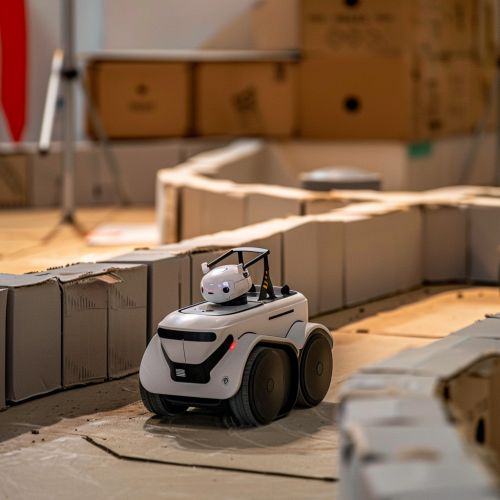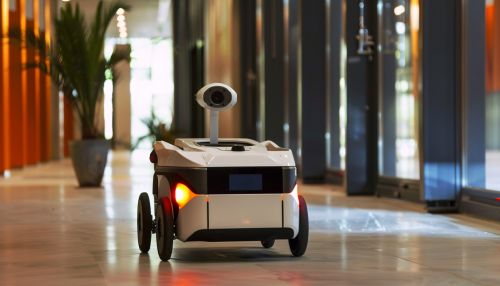SLAM
Overview
Simultaneous Localization and Mapping (SLAM) is a computational problem of constructing or updating a map of an unknown environment while simultaneously keeping track of an agent's location within it. This problem is significant in the fields of robotics, autonomous vehicles, and augmented reality. SLAM algorithms are essential for enabling robots and autonomous systems to navigate and understand their surroundings without relying on pre-existing maps or external positioning systems like GPS.
Historical Background
The concept of SLAM emerged in the 1980s, driven by advancements in robotics and the need for autonomous navigation. Early research focused on probabilistic methods and sensor fusion techniques to address the uncertainties in both the robot's motion and the environment's structure. Over the decades, SLAM has evolved, incorporating various sensors, computational models, and optimization techniques.
Core Components of SLAM
Localization
Localization refers to the process of determining the robot's position and orientation within a given map. This involves estimating the robot's pose (position and orientation) based on sensor data and motion models. Common techniques for localization include Kalman filters, particle filters, and graph-based methods.
Mapping
Mapping involves creating a representation of the environment based on sensor data. This can be achieved using various types of maps, such as occupancy grids, feature-based maps, and topological maps. The choice of map representation depends on the application and the available computational resources.
Sensor Fusion
Sensor fusion is the process of combining data from multiple sensors to improve the accuracy and reliability of localization and mapping. Common sensors used in SLAM include lidar, cameras, IMUs, and ultrasonic sensors. Sensor fusion techniques, such as Extended Kalman Filter (EKF) and Unscented Kalman Filter (UKF), are crucial for handling the uncertainties and noise in sensor data.
SLAM Algorithms
Extended Kalman Filter SLAM (EKF-SLAM)
EKF-SLAM is one of the earliest and most widely used SLAM algorithms. It uses the Extended Kalman Filter to estimate the robot's pose and the map's features. EKF-SLAM is suitable for small-scale environments and provides a good balance between computational efficiency and accuracy.
Particle Filter SLAM (FastSLAM)
FastSLAM is a particle filter-based approach that represents the robot's pose and the map's features using a set of particles. Each particle represents a possible state of the robot and the environment. FastSLAM is particularly effective in handling non-linearities and multi-modal distributions.
Graph-Based SLAM
Graph-based SLAM represents the robot's poses and the map's features as nodes in a graph, with edges representing constraints between them. Optimization techniques, such as nonlinear least squares, are used to find the most consistent configuration of nodes and edges. Graph-based SLAM is highly scalable and suitable for large-scale environments.
Applications of SLAM
Robotics
In robotics, SLAM is used for autonomous navigation, exploration, and mapping. Robots equipped with SLAM algorithms can operate in unknown environments, such as search and rescue missions, industrial automation, and service robotics.
Autonomous Vehicles
SLAM is a critical component in autonomous vehicles, enabling them to navigate complex urban environments without relying solely on GPS. SLAM algorithms help autonomous vehicles to build detailed maps of their surroundings, detect obstacles, and plan safe paths.
Augmented Reality
In augmented reality (AR), SLAM is used to overlay virtual objects onto the real world. SLAM algorithms track the user's movements and update the virtual content accordingly, providing a seamless and immersive AR experience.
Challenges and Future Directions
Scalability
One of the main challenges in SLAM is scalability. As the environment size increases, the computational complexity and memory requirements of SLAM algorithms also grow. Researchers are exploring techniques such as submap-based SLAM and hierarchical SLAM to address these challenges.
Robustness
Robustness is another critical challenge in SLAM. SLAM algorithms must handle various uncertainties, such as sensor noise, dynamic environments, and occlusions. Robust SLAM techniques, such as loop closure detection and outlier rejection, are essential for reliable performance.
Real-Time Performance
Real-time performance is crucial for many SLAM applications, especially in robotics and autonomous vehicles. Researchers are developing efficient algorithms and hardware accelerations, such as GPU and FPGA implementations, to achieve real-time SLAM.
See Also
References


